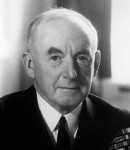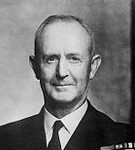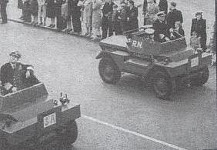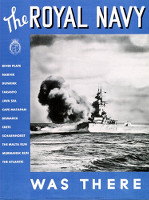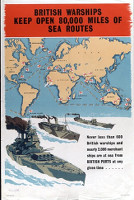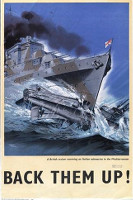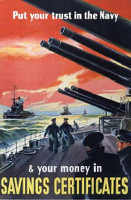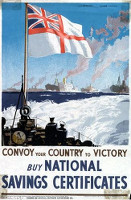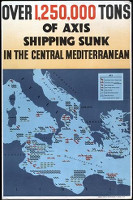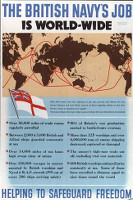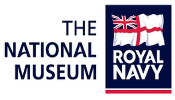|
|||||||||||||||||||||||||||||||||||||||||||||||||||||||||||||||||||||||||||||||||||||||||||||||||||||||||||||||||||||||||||||||||||||
|
|||||||||||||||||||||||||||||||||||||||||||||||||||||||||||||||||||||||||||||||||||||||||||||||||||||||||||||||||||||||||||||||||||||
|
|||||||||||||||||||||||||||||||||||||||||||||||||||||||||||||||||||||||||||||||||||||||||||||||||||||||||||||||||||||||||||||||||||||
|
The
purpose of this work is to enable those familiar with the
battles, operations, and individual ships of the Royal Navy
during the Second World War to put that information into the
overall structure of the Royal Navy.
Much of this work is based on the relevant issues of the Navy List, Pink Lists, and the official history by Stephen Roskill. In addition, this work could not have been written without access to material provided by Don Kindell, Jim Colledge, Mike Cox and Colin Mackie. To whom, many thanks are due.
Leadership, control and management of the Royal Navy was
vested in the Board of Admiralty which was responsible for
both the administration of the naval service and for the
command of British naval operations world-wide. As such it
differed from the War Office and the Air Ministry where
conduct of operations was devolved to the appropriate
commanders in the field.
The highest body in the Admiralty was the Board, composed of politicians, flag officers, and civil servants whose collective function was to discuss and approve major decisions on all aspects of the Royal Navy's strength. Each member of the Board had a specific function in relation to the administration of the Royal Navy. The chairman of the Board was the First Lord of the Admiralty. A politician and member of the Cabinet, his role was to represent the navy's views in government discussion on such matters as budgets, construction programmes, manpower needs, and general maritime policy. The First Lord was assisted by a junior flag officer titled the Naval Secretary who had specific responsibility for helping the First Lord in the appointment and promotion of officers. From May 1940 onwards the First Lord, Mr A V Alexander, largely confined himself to this role and did not interfere in operational matters. This was in contrast to his immediate predecessor. Between September 1939 and May 1940, Winston Churchill, as First Lord, did take a leading role in operational matters. The First Lord was assisted two junior politicians, the Parliamentary and Financial Secretary, and the Civil Lord. The most senior civil servant was the Permanent Secretary. The only major addition to the civilian side of the Board was the appointment of Sir James Lithgow, a prominent shipbuilder, as Controller of Merchant Shipbuilding and Repairs. Five of the six flag officers on the Board had a specific area of responsibility which was reflected in their titles; First
Sea Lord and Chief of the Naval Staff
Second Sea Lord and Chief of Naval Personnel Third Sea Lord and Controller Fourth Sea Lord and Chief of Supplies and Transport Fifth Sea Lord and Chief of Naval Air Services. The other member was the Deputy Chief of the Naval Staff In September 1939, most of the members of the Board were relatively new in their posts. The
First Lord, Earl Stanhope, was replaced by Winston Churchill
on the outbreak of war.
The
First Sea Lord - Admiral Sir Dudley Pound; the Deputy Chief
of the Naval Staff-Rear Admiral Tom Phillips; the Third Sea
Lord-Rear Admiral Bruce Fraser had taken up their posts in
June 1939. Equally new were Rear Admiral Harold Burrough as
Assistant Chief of the Naval Staff, and Rear Admiral Stuart
Bonham-Carter as Naval Secretary. The post of Fifth Sea Lord
was a recent creation brought about as the result of the
transfer of the Fleet Air Arm from the RAF in 1938.
During the course of the war, the personnel and the structure of the Admiralty changed. These changes were most evident in the Naval Staff - the group of directorates directly responsible to the First Sea Lord for the supervision of operations. The administrative tasks of the other sea lords were met by increased numbers of staff rather than by structural changes.
1.1 PRINCIPAL FLAG OFFICERS
AT THE ADMIRALTY, 1939-1945
The Sea Lords
First Sea Lord & Chief of the Naval Staff
12.06.39 Admiral of the Fleet Sir Dudley Pound [died
21.10.43]
15.10.43-Admiral of the Fleet Sir Andrew Cunningham Deputy First Sea Lord [post created to reduce administrative burden on Sir Dudley Pound and retained by Sir Andrew Cunningham who confessed his dislike of paper work].
29.07.42-Admiral Sir Charles Kennedy-Purvis
Second Sea Lord & Chief of Naval Personnel
30.09.38-Admiral Sir Charles Little
01.06.41-Vice Admiral William Whitworth [12.43-Admiral] 08.03.44-Vice Admiral Algernon Willis Third Sea Lord & Controller of the Navy [Controller was an ancient term for the officer in charge of ship acquisition]
01.03.39-Rear Admiral Bruce Fraser [5.40-Vice Admiral]
22.05.42-Vice Admiral Frederick Wake-Walker -29.09.45 [died] [5.45-Admiral] Fourth Sea Lord & Chief of Supplies and Transport
01.10.37-Rear Admiral Geoffrey Arbuthnot [5.40-Vice
Admiral]
24.04.41-Vice Admiral John Cunningham 08.05.43-Vice Admiral Frank Pegram [died 8.3.44] 27.03.44-Vice Admiral Arthur Palliser
Fifth Sea Lord & Chief of Naval Aviation
19.07.38-Vice Admiral Sir Alexander Ramsay
21.11.39-Vice Admiral Sir Guy Royle 18.03.41-Vice Admiral Lumley Lister-11.07.42 [post in abeyance] 14.01.43-Rear Admiral Desmond Boyd [6.44-Vice Admiral] 01.06.45-Rear Admiral Thomas Troubridge
The Naval Staff
Deputy Chief of the Naval Staff 5.40-Vice Chief of the Naval
Staff [title changed to
conform to similar changes in the General Staff and the Air
staff]
01.01.39-Rear Admiral Tom Phillips [acting Vice Admiral
10.39]
21.10.41-Vice Admiral Henry Moore 07.06.43-Vice Admiral Neville Syfret Assistant Chief of the Naval Staff -6.40 [duties split between several ACNS's in spring 1940]
01.39-Rear Admiral Harold Burrough
Assistant Chief of the Naval Staff [Foreign]
08.04.40-Vice Admiral [ret] Geoffrey Blake
01.12.40-Rear Admiral Henry Harwood 08.04.42-Rear Admiral Bernard Rawlings 02.43-Rear Admiral Reginald Servaes 01.03.45-Rear Admiral Edward Bellars Assistant Chief of the Naval Staff [Home]
27.05.40-Rear Admiral Arthur Power
28.05.42-Rear Admiral Patrick Brind 22.08.44-Rear Admiral Desmond McCarthy Assistant Chief of the Naval Staff [U-Boats & Trade]
25.07.40-Rear Admiral Henry Moore
21.10.41-Rear Admiral Edward King 07.12.42-Rear Admiral John Edelsten 00.10.44-Rear Admiral John Dundas 24.03.45-Rear Admiral John Mansfield Assistant Chief of the Naval Staff [Weapons]
08.07.41-Rear Admiral Roderick McGrigor
08.03.43-Rear Admiral Wilfred Patterson -5.44 Assistant Chief of the Naval Staff [Air]
01.01.43-Rear Admiral Reginald Portal
00.11.44-Rear Admiral Lachlan Macintosh Director of Naval Intelligence
02.39-Rear Admiral John Godfrey [9.42-Vice Admiral]
01.43-Rear Admiral Edmund Rushbrooke Some
Administrative Appointments
The
Naval Secretary
05.39-Rear Admiral Stuart Bonham-Carter
11.39-RearAdmiral Neville Syfret 06.40-Rear Admiral Arthur Peters 10.42-Rear Admiral Frederick Dalrymple-Hamilton 02.44-Rear Admiral Cecil Harcourt 02.45-Rear Admiral Claude Barry Director of Personnel Services
05.38-Rear Admiral Henry Pridham-Wippell
06.40-Rear Admiral William Tait 11.41-Rear Admiral Harold Walker 12.43-Rear Admiral Harold Kinahan Vice Controller
09.39-Vice Admiral [ret] Francis Tower [& Director of
Naval Equipment] -7.45
Deputy Controller
09.39-Rear Admiral James Dorling
11.41-Rear Admiral Charles Simeon Engineer-in-Chief
.36-Engineer Vice Admiral George Preece
03.42-Engineer Vice Admiral Frederick Turner 01.45-Engineer Vice Admiral John Kingcome Director of Dockyards
.36-Vice Admiral [ret[ Francis Talbot
.40-Engineer Rear Admiral Samuel Dunlop Adjutant-General Royal Marines, 10.43-GOC Royal Marines, 5.45-Commandant-General Royal Marines
10.36-General Sir William Godfrey
10.39-Lieutenant General Alan Bourne [1.42-General] 26.01.43-Lieutenant General Thomas Hunton [5.45-General] Note the relatively short periods of time which flag officers served on the Naval Staff as opposed to those who occupied posts in the administrative departments and directorates. There was a policy to rotate the more promising officers between staff appointments and sea appointments so that freshness of thought could be brought to both to the advantage of the efficiency of the service. Much of the expansion of posts - as seen in the table for the Admiralty in July 1945 - was accomplished through the employment of flag officers and captains who were either already on the Retired List or were placed on that list with the rank of Rear Admiral. The same phenomenon will be seen in the appointments to many posts in shore commands. Winston Churchill was inclined to bring some rather elderly senior officers out of retirement for specific posts for which they soon proved less than suitable. He did the same for a number of senior retired generals with similar consequences. The flag officers most identified with this practice were Admiral of the Fleet the Earl of Cork and Orrery to command operations off Narvik in May 1940; Admiral of the Fleet Sir Roger Keyes as Director of Combined Operations 1940-1941; and Admiral Sir Frederick Dreyer as Chief of Naval Aviation. The following two tables show that structure and principal personnel of the Admiralty just before the outbreak of war, and virtually at the end of hostilities.
1.2 THE ORGANISATION OF THE
ADMIRALTY IN 1939
The
Naval Staff
(D - Director, DD - Deputy Director, AD - Assistant Director)
Administrative Departments
(DG - Director General)
1.3
ORGANISATION OF THE ADMIRALTY, July 1945
The Naval Staff
The Administrative
Departments
2.
HOME COMMANDS and FLEETS
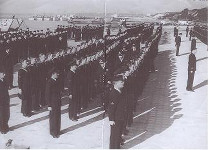 Last parade of Support Squadron Eastern Flank, October 1944 before the Walcheren landings (PO Basil Woolfe) The Home Commands can be considered in five different categories:
2.1 The three traditional shore commands
The Nore
Portsmouth Plymouth 2.2 Major wartime shore commands
Orkneys & Shetlands
Rosyth Dover 2.3 Type of commands
Submarine Service
Fleet Air Arm Coastal Forces 2.4 Major sea-going commands The
Home Fleet
Western
Approaches
The Halifax Escort Force 2.5 Allied command based in the UK Naval
Forces, Allied Expeditionary Force 1944-1945
The three traditional commands had existed since the eighteenth century and had a number of functions. They were the recruiting depots for all ratings who were assigned to the Royal Naval Barracks at Chatham, Portsmouth and Plymouth. Each had a range of training establishments which had evolved from the hulks of the early nineteenth century, to a mixture of shore establishments and hulks. Most provided training in a wide range of duties for the ratings in each command. As many of these training ships had begun as hulks, the ship names were retained even when the establishment was ashore. The legal requirement to have all ratings listed in the books of a commissioned ship added to the evolution of 'stone frigates'. Seagoing warships employed as training ships came under the control of the relevant command.
Each command contained at least one dockyard and naval
base for the ships assigned to the relevant command: all
commissioned ships were crewed by men from one of the
three commands.
Arising out of the requirements for local or coast defence, each command was responsible for naval operations in the local sea area. The commander-in-chief of each was an admiral with extensive sea experience, often former commanders of at least one of the major fleets, and sometimes a near-miss for appointment as First Sea Lord. During the Second World War, in order to ease the administrative burden, these commands devolved a range of tasks to local flag officers in what were normally mercantile ports.
NORE COMMAND
Named after a sandbank at the mouth of the Thames estuary, the command was responsible for naval operations from the straits of Dover northwards to Flamborough Head in Yorkshire. Shortly after the outbreak of the war, it gave up responsibility for the straits to the newly-reformed Dover Command. For the rest of the war its southern boundary was North Foreland. In operational terms its main role was to protect the coastal convoys off the eastern coast of England. In 1939-1940 it had a major role in anti-invasion plans. From 1941 to 1944 the convoys were its main task and then it shared responsibility for operations in the southern North Sea with the Allied Naval Expeditionary Force.
Commander-in-Chief
01.39-Vice Admiral Sir Henry Studholme Brownrigg*
01.40-Admiral Sir Reginald Plunkett-Ernle-Erle-Drax 12.41-Admiral Sir George D'Oyly-Lyon 06.43-Admiral of the Fleet Sir John Tovey * killed 24.1.43 while serving as convoy commodore Admiral Superintendent, Chatham Dockyard
09.39-Vice Admiral [ret] Charles Danby
10.42-Vice Admiral John Crace [10.42-Vice Admiral] With its headquarters at Chatham, it had other main bases and facilities at Sheerness, Harwich and Immingham.
There were two major dockyards:
Chatham Dockyard
Sheerness Dockyard
In 1939, the main shore bases were:
HMS Pembroke - Base & RN Barracks, Chatham
HMS Ganges - Boys training establishment, Shotley, near Harwich HMS Wildfire -AA Gunnery School, Sheerness
The command was subdivided into several sea areas with a
flag officer in command for each one. They were:
HMS Beaver - Humber
HMS Watchful - Great Yarmouth HMS Badger - Harwich Other major shore bases included;
HMS Midge - Coastal Forces base, Great Yarmouth
HMS Beehive - Coastal Forces base, Felixstowe HMS Europa - HQ Auxiliary Patrol, Lowestoft
The ships under command in September 1939 were:
3 B class destroyers as the 'Emergency Flotilla'
Cadets training cruiser - HMS Vindictive Harbour training ships - HMS Marshal Soult [gunnery], HMS Sandhurst [mechanical] The Reserve Fleet included 6 cruisers, 15 destroyers, and 5 minesweepers Ships in dockyard hands included - 1 cruiser, 4 destroyers and 1 sloop. The following flotillas served with the command during the period of hostilities:
19th Destroyer Flotilla [B class] - transferred to Dover
Command 10.39
22nd Destroyer Flotilla [formed 11.39 at Harwich with G class ex 1st DF/Mediterranean], reverted to title 1st Destroyer Flotilla 12.39 -to 6.40 16th Destroyer Flotilla*, formed at Harwich 6.40 - served until 5.45 [mixture V&W/Hunt classes] 18th Destroyer Flotilla, formed at Harwich 6.40-to 12.40 when broken up [V&W] 21st Destroyer Flotilla*, formed at Sheerness 7.40-served until 5.45 [V&W/Hunt classes] *
formed the southern force for the escort of east coast
convoys [see also-Rosyth Escort Force]
during the summer and autumn of 1944 further escorts were added but not organised into flotillas: in 9.44 they were 11 ex US destroyer escorts and 8 Flower class corvettes in 5.45 they were 10 ex US frigates/destroyer escorts and 13 Flowere class corvettes Throughout the conflict the small Kingfisher class corvettes were organised into the 1st and 2nd A/S Striking Groups which were combined as the 1st Corvette Flotilla in 1944.
The major minesweeper flotillas in Nore Command were:
5th M/S Flotilla, Harwich 9.39-4.41 when absorbed into
4MSF [Halcyon-4.40/Hunt classes]
4th M/S Flotilla, Harwich 12.39- mid 1942 [Hunt class] 12th M/S Flotilla, Harwich 12.39-mid 42 [paddle minesweepers] 6th M/S Flotilla, Harwich 5.40-9.40 [Halcyon] 18th M/S Flotilla, 5.43- [Algerine] 15th M/S Flotilla, by 2.44- [Bangor] 6th M/S Flotilla, Harwich 3.44-1.45 [Algerine] 7th M/S Flotilla, Harwich 3.44-1.45 [Algerine] 42nd M/S Flotilla, Harwich 8.44- [Catherine] 40th M/S Flotilla, Harwich .45- [Catherine] 10th M/S Flotilla, 4.45- [Algerine] 11th M/S Flotilla, 4.45- [Algerine]
Squadrons and Flotillas of other commands which served in
Nore Command 1939-1940:
2nd Cruiser Squadron
5th Destroyer Flotilla 7th Destroyer Flotilla 20th [Minelaying] Destroyer Flotilla also 3rd Submarine Flotilla, Harwich 10.39-5.40
PORTSMOUTH COMMAND
Generally regarded as the most prestigious of the home command, Portsmouth Command was responsible for the middle part of the English Channel between Newhaven and Portland. This area remained unchanged during the war. It was the main assembly area for the naval forces involved in the D-Day landings. Those forces were under the command of the Allied Naval Expeditionary Force commander [Admiral Sir Betram Ramsay], and not under Portsmouth Command.
Commander-in-Chief
30.06.39-Admiral Sir William James
01.10.42-Admiral Sir Charles Little 01.03.45-Admiral Sir Geoffrey Layton Admiral Superintendent, Portsmouth Dockyard
Rear Admiral [ret] Robert Turner
30.11.40-Rear Admiral Marshall Clarke-8.11.45 [4.43-Vice Admiral] The command's headquarters were at Portsmouth with the major base at Portland under its jurisdiction.
It had one major dockyard - Portsmouth Dockyard
and a smaller dockyard - Portland Dockyard
As part of a evolving tendency to concentrate shore
establishments in a single location rather than being
split between the three command, Portsmouth was
responsible for the largest number of training facilities
in 1939. They were:
HMS Victory - Base and RN Barracks
HMS Dolphin - Submarine training school at Gosport [see also submarine command] HMS Dryad - Navigation school HMS Excellent - Gunnery school on Whale Island HMS St Vincent - Boys training school, Gosport HMS Sultan - Mechanical engineering school HMS Vernon - Torpedo and mining school
The command was divided into three subordinate areas:
HMS Boscawen - Portland
HMS Fortune - Newhaven HMS Shrapnel -Southampton
During the course of hostilities, a range of shore
establishments were formed, some of which were retained
after 1945*:
HMS Collingwood* -Electrical school
HMS Hornet* - HQ Coastal Force HMS Mercury* - Signals school [existed prewar but not named] HMS King Alfred - RNVR officers training establishment, Hove HMS Marlborough - Torpedo school, Eastbourne HMS Grasshopper - Coastal forces base, Weymouth HMS Turtle - Combined operations training establishment, Poole [postwar under different name]
The ships under command in 1939 included:
at Portsmouth:
Local Destroyer Flotilla [8 destroyers of various classes] 5 destroyers attached to HMS Vernon 1 old battleships and 1 cruiser attached to HMS Vernon 2 minesweepers attached to HMS Dryad The 5th Submarine Flotilla was based at Gosport
at Portland:
First A/S Flotilla of 1 sloop, 3 destroyers, and 6 corvettes Fishery Protection & Minesweeping Flotilla with 2 sloops and 12 minesweepers The 6th Submarine Flotilla was based at Portland. The Reserve Fleet included 1 old aircraft carrier, 9 cruisers and 15 destroyers. Ships in refit included 1 battleship, 1 battlecruiser, 4 cruisers, 2 destroyers and 1 submarine.
The following squadrons and flotillas served in the
command during the war.
The Channel Force, Portland 3.9.39-7.10.39 [drew
vessels from both Portsmouth & Plymouth]
3rd Battle Squadron 2 aircraft carriers & 2 old cruisers 12th Destroyer Flotilla & 18th Destroyer Flotilla also: 16th Destroyer Flotilla [V&W] -8.40 18th Destroyer Flotilla [A class] -10.39 1st Destroyer Flotilla [A class then Hunt class] 7.40-5.45 22nd Destroyer Flotilla [old S class] 7-11.40
Extra escorts joined the command in 1944 to support the
invasion of Europe and then to protect the cross-channel
supply lines. These ships were not organised into
flotillas.
In September 1944 they included 8 old destroyers, 5
sloops, 17 destroyer escorts and 15 corvettes
In May 1945 they included 6 French frigates, 4 destroyer escorts, 5 sloops and 16 corvettes.
The major minesweeping flotillas were:
9 M/S F, Portsmouth 11.40-5.45 [Bangor]
14 M/S F, Portsmouth 9.41-1.42 [Bangor] 4 M/S F, Portland 4.44- Portsmouth 8-12.44 [old Hunts]
PLYMOUTH COMMAND
titled WESTERN APPROACHES COMMAND 9.39-1.41 retitled PLYMOUTH COMMAND 2.41-
Plymouth Command was responsible for the western Channel,
the South-West Approaches, Bristol Channel and the Irish
Sea. In the expectation of major convoy movements from the
Irish Sea around the south of Ireland, the command was
renamed Western Approaches Command on the outbreak of war.
The German occupation of northern France in the summer of
1940 made convoy routing around the south of Ireland too
hazardous. All convoys had to move into the Atlantic via the
north of Ireland.
As
a result, the command headquarters at Plymouth became too
remote. The convoy protection role was allocated to a new
headquarters at Liverpool which became the new Western
Approaches Command in January 1941. Plymouth Command
reverted to a more geographically restricted role of
protecting the south-west coastline. In 1943-1944 more
active operations against German naval forces were begun
with the establishment of a cruiser-destroyer striking
force.
Commander-in-Chief
24.10.38-Admiral Sir Martin Dunbar-Nasmith VC
01.05.41-Admiral of the Fleet Sir Charles Forbes 24.08.43-Vice Admiral Sir Ralph Leatham [12.43-Admiral] Admiral Superintendent, Devonport Dockyard
27.09.38-Rear Admiral Arthur Dowding -12.45 [ 5.40 -Vice
Admiral]
In
peacetime the command's facilities were concentrated in the
Plymouth area. They were Devonport Dockyard and a small
number of training establishments:
HMS Drake - Base and RN Barracks
HMS Defiance - Torpedo school
Royal Naval Engineering College The
Britannia Royal Naval College, Dartmouth, was in the area
but not under the command's authority.
Major subordinate commands during the war were:
HMS Forte - Base at Falmouth
HMS Skirmisher - Base at Milford Haven
Major shore establishments
commissioned during the war were:
HMS Raleigh - Training base at Torpoint [retained postwar]
HMS Effingham - Combined operations base, Dartmouth 1943-46 HMS Lizard - Landing craft training base HMS Appledore - Commando training base Ships allocated to the command 1939:
Emergency Flotilla - 3 destroyers
Training duties - 1 aircraft carrier, 1 destroyer
Reserve Fleet:
1
aircraft carrier, 6 cruisers, 1 minelayer, 14 destroyers
In refit - 2 battleships, 2 cruisers, 4 destroyers, 1
sloop, 1 minesweeper
In
September 1939, the command was allocated:
part of the Channel Force - 2 aircraft carriers, part 18th
Destroyer Flotilla
11th Destroyer Flotilla 17th Destroyer Flotilla Flotillas allocated 1939-1945:
5th Destroyer Flotilla. 9.40-3.41
11th Destroyer Flotilla-11.40 to escort groups 17th Destroyer Flotilla-11.40 to escort groups 15th Destroyer Flotilla 10.39-5.45 10th Destroyer Flotilla 1-12.44 8th Destroyer flotilla 1.45-5.45 The major minesweeping flotillas were:
ROSYTH COMMAND
Originally activated during the First World War,
this command had been 'semi-dormant' during the interwar
years as 'Coast of Scotland'. It was reactivated in August
1939 and remained one of the major home commands for the
rest of the war, and afterwards. Its span of operations
extended from Cromarty in the north, down the east of coast
of Scotland and north-east England to Flamborough
Head. Unlike the three major commands in southern
England, it was not a major manning division with a wide
array of training establishments. It ceded responsibility
for the west coast of Scotland to HQ Western Approaches to
Liverpool at the beginning of 1941.
Commander-in-Chief
03.08.39-Vice Admiral Sir Charles Ramsay
05.04.42-Admiral Sir Wilbraham Ford 01.06.44-Vice Admiral William Whitworth [5.45-Admiral] Admiral Superintendent Rosyth Dockyard
24.09.39-Rear Admiral Colin Cantlie [10.42-Vice
Admiral (ret)]
15.04.44-Rear Admiral Henry Bovell In 1939 the major facilities in the command were:
Rosyth Dockyard
HMS Caledonia - Artificer training establishment, Rosyth HMS Cochrane - Base at Rosyth
Major subordinate
commands were:
HMS Flora - Invergordon
HMS Bacchante - Aberdeen HMS Claverhouse - Leith HMS Calliope - Tyne
Major shore
establishments added during the war:
none
Ships allocated to
Rosyth 8.39:
1 destroyer
In reserve -1 cruiser, 10 destroyers
Flotillas which served in Rosyth Command
At the outbreak of war, the Rosyth Escort Force was
formed. It consisted of a number of sloops and destroyers
- many of the latter were 'WAIRS' (possibly
from W-class, anti-AIRcraft) - V& W class
destroyers modernised for A/A escort duties. The
Rosyth Escort Force remained operational throughout the
war. It's main task was the provision of escorts for the
northern sector of the east coast convoy system. Although
the sloops were withdrawn to Western Approaches and other
duties, the WAIR's remained supported by Hunt class escort
destroyers.
Other flotillas were:
15th Destroyer Flotilla 9-10.39
1st M/S Flotilla 1.45- [Halcyon] 7th M/S Flotilla, Granton 9.39-12.41 [paddle m/s] 8th M/S Flotilla, Tye 9.39- .42 [paddle m/s] 16th M/S Flotilla, Rosyth 8.42-9.43 40th M/S Flotilla, Granton 9.43- .45 [Catherine] 41st M/S Flotilla, Granton 11.43-8.44 [Catherine] 42nd M/S Flotilla, Granton 4-8.44 [Catherine]
ORKNEYS & SHETLANDS
COMMAND
Formed on the outbreak of war to provide for the defence and
administration of the main base for the Home Fleet. It was
also the base for the Northern Patrol.
Flag Officer
09.39-Admiral [ret] Sir William French
12.39-Vice Admiral Hugh Binney 07.01.42-Vice Admiral Lionel Wells [10.43-Admiral] 04.44-Vice Admiral Sir Henry Harwood Flag was flown aboard HMS Iron Duke at Scapa
HMS Fox - base at Lerwick
HMS Pyramus - base at Kirkwall
Flotillas allocated to the command included:
6th M/S Flotilla 7.41-12.42 [this flotilla may have been
under direct Home fleet command]
15th M/S Flotilla 4.42-2.44 [Bangors] THE
NORTHERN PATROL - Operating within the Orkneys &
Shetland Command, but not under command-9.40
Flag Officer
09.39-Vice Admiral Max Horton
01.40-Vice Admiral Robert Raikes 07.40-Rear Admiral Ernest Spooner -9.40
Major components:
7th Cruiser Squadron 9.39-12.39
12th Cruiser Squadron 9.39- retitled 3.10.39-11th Cruiser Squadron-1.40 These squadrons were supplemented and the replaced by armed merchant cruisers which operated until dispersed or converted to other duties 1940-1941.
DOVER COMMAND
Like Rosyth, and Orkneys & Shetlands, this
former Great War command was re-formed to control and
protected sea traffic in the Straits of Dover. It was formed
by removing the Straits from Nore Command. Its function
would be to protect the supply lines of the British
Expeditionary Force in France. This task became redundant
after its splendid supervision of the evacuation from
Dunkirk. After the threat of German invasion
diminished in 1941, its continued existence as a separate
command from Nore Command seems to have more to do with
prestige. After the Normandy landings its sea area was
largely used by the Allied Naval Expeditionary Forces.
Flag Officer
24.08.39-Vice Admiral [ret] Bertram Ramsey
23.04.42-Commodore Cunliffe 01.08.42-Vice Admiral Henry Pridham-Wippell [6.44-Admiral]-10.07.45 Flotillas allocated to the command
19th Destroyer Flotilla 9-11.39 & 2.40-6.40
6th M/S Flotilla, 5-9.40 [Halcyon]
COASTAL FORCES
A headquarters was established at Gosport to provide
an organisation to develop the role of coastal forces in
home waters. Commanded throughout its existence between
October 1940 and November 1943 by Rear Admiral Piers
Kekewich. It is not clear whether it had an operational
role.
Coastal Forces base were formed at:
HMS Hornet - HQ at Gosport
HMS Midge - Great Yarmouth HMS Beehive - Felixstowe HMS Wasp - Dover HMS Grasshopper - Weymouth
THE SUBMARINE SERVICE
Until the outbreak of war, the Rear Admiral [Submarines] at
Fort Blockhouse, Gosport, was the head of the submarine
service. He exercised administrative control over the
service, and had operational control over the submarine
flotillas in home waters. Those two tasks remained the same
throughout the conflict. In September 1939 he moved the
operational staff to a new headquarters at Aberdour in Fife
- about six miles downstream from Rosyth. His administrative
staff remained in Gosport. This move made sense when the
only two operational flotillas were the 2nd at Dundee and
the 6th at Blyth. This cumbersome arrangement ceased when
Sir Max Horton took command in January 1940 when the
headquarters moved to Northwood in Middlesex.
Rear Admiral [Submarines]
15.12.38 Rear Admiral Bertram Watson
00.01.40-Vice Admiral Max Horton [as Vice Admiral [Submarines][ then 1.41-Admiral [submarines]] 00.11.42-Rear Admiral Claud Barry 00.09.44-Rear Admiral George Creasey The
submarine service was organised in to flotillas made up of
one depot ship and a flexible number of submarines. These
flotillas usually operated out of a single base.
The flotillas in home waters were:
2nd Submarine Flotilla, Dundee 9.39- Rosyth 11.39-1.41 Fully
operational flotilla which moved to Halifax, Nova Scotia
1.41
3rd Submarine Flotilla, Harwich
10.39- Rosyth 5.40-Holy Loch 6.40-9.45, continued in
existenceFormed
from boats returned from Malta. Became the principal
operational flotilla in home waters
5th Submarine Flotilla, Gosport
9.39-9.45, continued in existenceTraining
flotilla with occasional active boats which became an
administrative organisation to supervise boats under
refit in the UK
6th Submarine Flotilla, Blyth
[ex Portland] 9.39-5.45
Operational until 1.42 when it became a training
flotilla
7th Submarine Flotilla,
Rothesay 10.40-9.45,
continued in existence
Submarine
training flotilla
9th Submarine Flotilla, Harwich
6.40- Dundee 8.40-5.45
Administrative organisation for allied boats [Dutch,
French etc]
From 1941, it became policy to
assign all new boats to the 3rd Submarine Flotilla where
they would work up to full operational efficiency, and
conduct at least one patrol in the flotilla's area of
responsibility. A small number of these boats became
permanent members of the flotilla. The majority were either
sent to the Mediterranean, and to the Indian Ocean [from
1943] where they did a tour of approximately 12 months
[excluding passage time].
FLEET AIR ARM
The post of Flag Officer Naval Air Stations was
established in May 1939 to provide the shore support for the
Fleet Air Arm, which had been transferred from the
RAF. Based at Lee-on-Solent, this officer had to
create naval air stations for a variety of roles. They
included flying training for specific roles and types of
aircraft; ground training for mechanics and other personnel;
lodger air stations for disembarked carrier squadrons; and
trials and development.
Flag Officer Naval Air Stations [5.45-retitled Flag Officer Air [Home]]
24.05.39-Rear Admiral Richard Bell-Davies VC
30.09.41-Rear Admiral Clement Moody 12.05.43-Rear Admiral [ret] Cloudesley Robinson [1.1.45-Vice Admiral [ret]] 01.06.45-Vice Admiral Denis Boyd This officer was assisted by Flag Officer Carrier Training & Administration
27.04.43-Vice Admiral Lumley Lyster -9.45
In 1939, the Royal Naval Air Stations were-
HMS Daedalus - Lee-on-Solent
HMS Kestrel - Worthy Down [remainder under construction] HMS Merlin - Donibristle HMS Peregrine - Ford By May 1945, 36 RNAS and 14 training establishments had been established.
COMBINED OPERATIONS
(FO - flag officer)
Largely controlled by the tri-service Combined Operations
Directorate, this aspect of naval operations did not have an
overall commander. Instead responsibility for the training
and preparation of amphibious forces was divided between
several flag officers.
They were:
Rear
Admiral Thomas Baillie-Grohman - FO Combined Operations
.42- .43
Rear Admiral Charles Daniel - FO Combined Operations .43- .44 Rear Admiral Thomas Troubridge - FO Combined Operations Bases 1-5.43 Rear Admiral Henry Horan - FO Combined Operations Bases 5.43-8.43 Rear Admiral Loben Maund - FO Landing Craft .43-10.44 Rear Admiral Guy Warren - FO Unallocated Landing Craft .44-
Once trained these forces were
transferred to the relevant task force commander.
THE HOME FLEET
The principal battle fleet for the greater part of the
war. Based at Scapa Flow, most of the time, its function
was to provide heavy support to all other operations in
home waters. This was done largely by standing guard
ready to meet incursions by German surface ships into
the Atlantic and Arctic.
The Home Fleet was organised on traditional lines with a battle squadron, aircraft carriers, cruiser squadrons, and destroyer flotillas. As the war progressed there was an increased tendency for the Home Fleet to operate with de facto task forces for which the cruiser squadron commanders provided the leadership.
12.04.38-Admiral Sir Charles Forbes [5.40-Admiral of
the Fleet]
02.12.40-Admiral Sir John Tovey 08.05.43-Admiral Sir Bruce Fraser 14.06.44-Admiral Sir Henry Moore
06.41-Rear Admiral Alban Curteis [12.41-Vice Admiral]
28.06.42-Vice Admiral Bruce Fraser 23.06.43-Vice Admiral Henry Moore- 6.44
2nd Battle Squadron [Rear Admiral Henry Blagrove]
Battle-cruiser Squadron [Rear Admiral William Whitworth] Aircraft Carriers [Vice Admiral Lionel Wells] 2nd Cruiser Squadron [Vice Admiral Frederick Edward-Collins] Destroyer Flotillas [Rear Admiral Ronald Hallifax]
6th Destroyer Flotilla [Tribal class]
7th Destroyer Flotilla [J class] 8th Destroyer Flotilla [F class] Capital
Ships
2nd
Battle Squadron [Rear Admiral Henry Blagrove]
Ceased to exist as separate squadron when Blagrove
died on HMS Royal Oak 14.10.39
Battleships came under direct command of CinC or
from 6.41, the 2i/c
Battle-cruiser Squadron [Vice Admiral Whitworth; then Vice Admiral Lancelot Holland-8.5.41-24.5.41] Ceased
to exist with the loss of HMS Hood and Vice
Admiral Holland.
Aircraft
Carriers
Aircraft Carriers Home Fleet [Vice Admiral Wells
7.40-Rear Admiral Lyster]
Flag transferred to Mediterranean 9.40
Returned to Home Fleet 7.42 under command of Vice
Admiral Lyster
[succeeded by Rear Admiral Clement Moody 21.5.43
-until 1.12.43]
Escort Carriers, Home Fleet 10.43-2.45 [Rear Admiral
Arthur Bissett 7.44-Commodore Oliver]
Cruisers
(note: Cruiser Squadrons are listed in order of formation)
2nd Cruiser Squadron [Vice Admiral
Edward-Collins] [Town class]
Split into 2nd CS with Humber Force and 18th CS with
Home Fleet
18th Cruiser Squadron 9.39-9.42 [Town class]
Rear Admiral Ronald Hallifax
10.39-Vice Admiral Geoffrey Layton 11.40-Rear Admiral Lancelot Holland [1.41-Vice Admiral] 5.41-Rear Admiral Neville Syfret 13.1.42-Rear Admiral Stuart Bonham-Carter -9.42
1st Cruiser Squadron - transferred from
Mediterranean Fleet [County class] 10.39-5.45
10.39-Vice Admiral John Cunningham
1.41- Rear Admiral Frederick Wake-Walker [4.42-Vice Admiral] 24.02.42-Rear Admiral Louis Hamilton 29.08.43-Rear Admiral Arthur Palliser 27.03.44-Rear Admiral Roderick McGrigor
2nd Cruiser Squadron -returned to Home Fleet 1.40
[Arethusa & Leander classes]
Vice Admiral Frederick Edward-Collins
10.40-Rear Admiral Alban Curteis 6.41- Rear Admiral Philip Vian -10.41
15th Cruiser Squadron 5.40-4.41 [Dido class]
Rear Admiral Edward King
10th Cruiser Squadron 9.40-5.45 [Colony class to
which Town class were added 1942- and Dido class
from 1943]
10.09.40-Rear Admiral Harold Burrough
08.42-Rear Admiral Cecil Harcourt 12.01.43-Rear Admiral Robert Burnett 03.03.44-Rear Admiral Frederick Dalrymple-Hamilton 08.04.45-Rear Admiral Angus Cunningham-Grahame
Minelayers
1st Minelayer Squadron, Loch Ewe 8.40-6.43
08.40-Rear Admiral Frederick Wake-Walker
11.40-Rear Admiral Robert Burnett 02.43-Rear Admiral Thomas Drew 02.43-Rear Admiral Arthur Peters
Destroyers
Rear Admiral Destroyers 9.39-7.44
09.39-Rear Admiral Ronald Hallifax-10.39
vacant 00.41-Rear Admiral Louis Hamilton 05.03.42-Rear Admiral Robert Burnett 12.01.43-Rear Admiral Irvine Glennie 19.07.44-Commodore Hutton (note:
Destroyer Flotillas are listed in order of
formation)
Minesweeeper
Flotillas
WESTERN APPROACHES
COMMAND
As recorded under Plymouth Command, HQ Western
Approaches was established in its own right at Liverpool
in February 1941. From there it conducted the war
against the German U-boats for the rest of the war.
Commander-in-Chief
17.02.41-Admiral Sir Percy Noble
17.11.42-Admiral Sir Max Horton
The forces allocated
to the command were based at three locations - Greenock,
Liverpool and Londonderry. In the autumn of 1943 a
fourth escort base was established at Belfast. At each
base as Captain [D] was responsible for the efficiency
of the allocated groups.
The pattern of convoys followed two main routings. The
transatlantic flow to and from North America; and the
southward flow to West Africa and onwards to South
Atlantic and Indian Ocean.
The tactical organisation of the escort forces had been
established in the autumn of 1940 when a new type of
organisation was formed - the escort group. Each was
composed of a 2-3 destroyers and 6 corvettes with the
intention they should operate together in defence of a
convoy. Initially the escort groups were focussed on the
transatlantic convoys. The sloops were allocated as
required to the southern routes from their bases. They
became escort groups - solely of sloops and later
frigates - in the autumn of 1941. The escort group
remained the principal tactical organisation for the
rest of the conflict. Their composition became more
coherent and permanent as the concepts of joint training
and joint operations became more possible. In 1943, a
number of support groups were formed. As they were not
tied to a particular convoy, they could provide extra
hunting power where and when required.
During 1941, a number of 'special escort groups' were
formed. They were made up of old destroyers and their
role was to provide escorts for troopship convoys.
Another change evolved during 1944 - an escort pool was
formed of escorts not allocated to a specific escort
group. Ships in a pool could be employed when
circumstances required - many of the Flower class
corvettes were allotted to escort pools as more modern
frigates took their place in established escort groups.
Another rather short-lived organisation was the Irish
Sea Escort Force which was made up of anti-aircraft
ships.
As escort carriers
became available they were based at Greenock from which
location they were deployed on convoy duty. The base was
responsible for the work-up of all escort carriers.
One striking feature of the command was the employment of non-Royal Navy escort groups. The Royal Canadian Navy provided an increasing number of groups so that by the last year of the war about half the groups - based at Londonderry - were Canadian. In addition there were Free-French, a largely Norwegian, and a largely Polish Groups. The organisation of Western Approaches Command can be illustrated by a series of snapshots which outline the distribution of groups.
Western Approaches 1st
January 1941
Western
Approaches 1st January 1942
Western Approaches 29th
January 1943
Western Approaches 4th February 1944
Western Approaches, 5th January 1945
THE HALIFAX ESCORT
FORCE
Formed in October 1939 at Halifax Nova Scotia to provide
a heavy force capable of protecting convoys from German
surface raiders.. It was dissolved in January 1942 when
the battleships were required in the Indian Ocean. Note
the use of submarines as convoy escorts!
(Additional Note: The Halifax Escort Force was not part of the Home Fleet but had battleships which made it a resource with hitting power. As it was intended to protect Atlantic convoys from surface raiders it has been placed between Western Approaches [which protected convoys from submarines] and the Home Fleet [which barred access by German surface ships to the Atlantic]. It was under direct Admiralty control throughout its existence.) Flag Officers/FO 3rd Battle Squadron
01.40-Rear Admiral Stuart Bonham-Carter-1.42
Composition
3rd Battle Squadron [mainly Royal Sovereign class]
Cruisers - Emerald, Enterprise, Effingham at various dates in 1940 2nd Submarine Flotilla 1.41-6.41 -Forth & 3-4 T class submarines 2.5
ALLIED COMMAND BASED IN THE UK
ALLIED NAVAL
EXPEDITIONARY FORCE 1944-1945
Formed in January 1944 to command the naval aspects of
the landings in Normandy and subsequent advance up the
Channel. It made use of ships from nearby commands for
specific operations. For Operation Neptune, the force
was organised into specific task forces.
Commander-in-Chief
01.44- Admiral Sir Bertram Ramsey [killed in air crash
2.1.45]
01.45- Vice Admiral Harold Burrough Task Force commanders for Operation Neptune
Eastern Naval Task Force -Vice Admiral Philip Vian
Task Group S - Rear Admiral Arthur Talbot Task Group J - Commodore G N Oliver Task Group G - Commodore C Douglas-Pennant Task Group D - Rear Admiral Wilfred Patterson Task Group E - Rear Admiral Frederick Dalrymple-Hamiton Task Group K - Commodore Longley-Cook Mulberry Harbours - Rear Admiral William Tennant After the landings
Commander British Assault Area/Force 7-12.44, Rear
Admiral James Rivett-Carnac
3. OVERSEAS COMMANDS and FLEETS 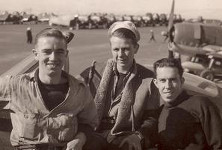 Aircraft maintenance crew from HMS Indomitable, Indian and Pacific Ocean 1944-45 (Paul Whiteing)
AMERICA AND WEST INDIES
COMMAND, 1939-1942
Based at Bermuda with the 8th Cruiser Squadron as its
principal component, this command was concerned
primarily with operations to detect and sink German
surface raiders. The combination of a reduction in
that threat, the entry of the United States into the
war, and the increased role of the Royal Canadian Navy,
brought about the virtual end of the command in 1942.
Commander-in-Chief
26.05.37-Vice Admiral Sydney Meyrick
[1.40-Admiral]
03.04.40-Vice Admiral Charles Kennedy-Purvis -4.42 07.42-Vice Admiral Alban Curteis - as Senior British Naval Officer Western Atlantic 10.44-Vice Admiral Irvine Glennie Ships Allocated
In 1939-3 cruisers & 2 sloops
6.1940- 4 cruisers and 3 RCN armed merchant cruisers 1.1941- 4 cruisers
Apart from a Dutch sloop, little was listed after
1942.
Between 1943 and 1945 Bermuda was the major work-up base for US built escorts for the Royal Navy.
SOUTH AMERICAN
DIVISION, 1939
A small unit of two cruisers which came to prominence at
the battle of the River Plate in December 1939. It was
absorbed into the South Atlantic command shortly
thereafter.
Commander
.36-Commodore Henry Harwood [12.39-Rear Admiral
07.40-Commodore Frank Pegram [2.42-Rear Admiral] 9.1939-cruisers Exeter and Ajax.
AFRICA COMMAND/SOUTH ATLANTIC COMMAND, 1939-1942
Based at Simonstown with the 6th Cruiser Squadron as its
main component, it was retitled South Atlantic Command
in September 1939 when its headquarters moved to
Freetown in Sierra Leone.
With the establishment of West Africa Command in August
1942, South Atlantic Command was transferred back to
Simonstown.
Commander-in Chief
08.03.38-Vice Admiral George D'Oyly-Lyon
09.40-Vice Admiral Robert Raikes 02.41-Rear Admiral Algernon Willis 03.42-Rear Admiral William Tait 04.44-Vice Admiral Robert Burnett
Between 1939 and 1942 the command had a varying number
of ships which included an aircraft carrier, a seaplane
carrier, between 6 and 9 cruisers, and up to 13 armed
merchant cruisers. In September 1939, this force
included two submarines at Freetown [Severn, Clyde]. The
main purpose of this force was to hunt down German
surface raiders. On a number of occasions it received
extra forces for specific tasks: the hunting groups of
1939; Force M for operations against Vichy French forces
in the autumn of 1940; and the invasion of Madagascar in
the spring of 1942.
After the creation of a separate West Africa Command, the forces base at Simonstown were minimal for the rest of the war: often little more than 3-4 corvettes. WEST
AFRICA COMMAND, 1942-1945
Created in August 1942 as part of the re-organisation of
commands. This was a recognition of the growing
importance of Freetown as a major base for convoy
escorts.
Flag Officer
08.42-Rear Admiral Frank Pegram
05.43-Rear Admiral Bernard Rawlings 11.43-Vice Admiral Arthur Peters From 1941, an escort force began to be build up at Freetown. Initially it consisted of 2 corvettes and a few Free French vessels. the growth of the escort forces is illustrated:
01.07.1941- 18th Destroyer Flotilla [8], 2 sloops, 18
corvettes
01.01.1942- 18th Destroyer Flotilla [8], 2 sloops, 24 corvettes 01.08.1942- 18th Destroyer Flotilla [8], 2 sloops, 23 corvettes 01.07.1943- 15 destroyers, 2 sloops, 15 corvettes 01.02.1944- 6 destroyers, 7 sloops & frigates, 7 corvettes 01.09.1944- 25 escorts organised in 56, 58, 59, 60 Escort Groups 02.05.1945- 24 escorts organised in 55, 56, 57, 58 Escort Groups
GIBRALTAR/NORTH ATLANTIC COMMAND 1939-1945
On the outbreak of war, the Gibraltar command was
elevated to North Atlantic Command with responsibility
for the sea lanes on either side of the straits. Those
duties remained although the commands efforts were often
obscured by the activities of Force H [see below] and
Western Approaches. The lack of clear boundaries of
responsibility between Gibraltar and Force H created
confusion in the conduct of naval operations in the
area. By the end of 1942, Gibraltar was concerned
primarily with being a base for convoy escorts. As such,
the command had become a component area command of the
allied naval forces in the Mediterranean.
Rear Admiral Gibraltar then Vice Admiral Gibraltar
05.39-Rear Admiral Norman Wodehouse
01.11.39-Vice Admiral Sir Dudley North 09.12.40-Vice Admiral Frederick Edward-Collins 09.43-Vice Admiral Harold Burrough 01.45-Vice Admiral Victor Crutchley VC
Before 1939, a small force of destroyers was based at
Gibraltar. This was enlarged to form the 13th
Destroyer Flotilla which was the main force
throughout the war.
Squadrons and Flotillas based at Gibraltar
11th Cruiser Squadron 9-10.39 [2 old cruisers]
13th Destroyer Flotilla 9.39-5.45 8th Submarine Flotilla 12.40-12.42 [flotilla then moved to Algiers] 28, 36, 37, 38 Escort Groups were based at Gibraltar whilst part of Western Approaches. [other formations stationed at Gibraltar 1943-1945 will be dealt with in the Mediterranean Fleet section below] ATLANTIC
OCEAN/MEDITERRANEAN
FORCE H, 1940-1943
Created on 28th June 1940 in the aftermath of the defeat
of France, to provide a task force capable of operations
in both the western Mediterranean and the Atlantic. It
was under direct Admiralty control and in not
subordinate to Gibraltar. It became the principal force
for the supply convoys to Malta. From November 1942
-with Operation Torch-it became the battle fleet of the
Allied Naval Forces in the Mediterranean until
disbandment in August 1943. As such it provided cover
for the landings in Algeria, Sicily and Salerno.
Flag Officer
28.06.40-Vice Admiral James Somerville
10.01.42-Vice Admiral Neville Syfret 01.43-Vice Admiral Harold Burrough 24.02.43-Vice Admiral Algernon Willis
Second-in-Command
06.40-Rear Admiral Lancelot Holland [18th Cruiser
Squadron]
04.41-Rear Admiral Neville Syfret 01.42-Commodore Charles Daniel 07.42-Rear Admiral Cecil Harcourt 05.43-Rear Admiral Arthur Bissett
The following notes
relate to the composition of Force H up to the autumn of
1942. After that date the ships allocated to it deployed
as part of a wider allied effort throughout the
Mediterranean.
[see Mediterranean Fleet below]
In general, Force H
was composed of a core of permanently allocated
ships-usually one capital ship, one aircraft carrier,
one-two cruisers, and one destroyer flotilla. Extra
ships from either the North Atlantic Command at
Gibraltar, the Home Fleet, and the Mediterranean Fleet
for major operations such as the action against the
French fleet at Oran or the main Malta convoys.
The permanent component at various dates was made up of
the following ships:
Destroyer Flotillas
8th Destroyer Flotilla [F class] 6.40-8.41
4th Destroyer Flotilla [Tribals] 8.41-4.42 19th Destroyer Flotilla [L class] 10.41-
THE MEDITERRANEAN
FLEET, 1939-1945
As the organisation of the Mediterranean Fleet changed
considerably over the five years of conflict, it is best
to outline its command structure and composition in
several time scales.
They are:
1. Original composition in September 1939
2. Much reduced strength, October 1939-May 1940 3. Full strength battle force, June 1940-December 1942 4. The complexities created by the introduction of the Allied Naval Expeditionary Force 1943-1944 5. United Mediterranean Command 1944-1945
The complexity of the period 1942-43 can be seen in the
following lists of CinC's
Commander-in-Chief
06.39-Admiral Sir Andrew Cunningham
03.42-Vice Admiral Henry Pridham-Wippell [temp] 22.04.42-Admiral [actg] Sir Henry Harwood 20.02.43-Admiral of the Fleet Sir Andrew Cunningham 10.10.43-Admiral Sir John Cunningham Shore headquarters
Malta
6.40-Alexandria 2.43-Malta Commander Allied Naval Expeditionary Force (ANXF) 1942-1943
10.42-Admiral Sir Andrew Cunningham -2.43
Deputy
Commander ANXF 1942-1943
010.42-Vice Admiral Bertram Ramsay -2.43
Gibraltar
12.42-Algiers
Mediterranean Fleet,
September 1939
1st Battle Squadron [Vice Admiral Geoffrey Layton] [3
Queen Elizabeths & Ramillies]
Aircraft carrier - Glorious 1st Cruiser Squadron [Vice Admiral John Cunningham] [3 County class] 3rd Cruiser Squadron [Rear Admiral Henry Moore] [2 Galatea class] Destroyer Flotillas [Rear Admiral John Tovey]
1st Destroyer Flotilla [G class]
1st Submarine Flotilla
[Maidstone, 2 Porpoise & 4 S class]2nd Destroyer Flotilla [H class] 3rd Destroyer Flotilla [I class] 4th Destroyer Flotilla [Tribal class] Vice Admiral Malta - Vice Admiral Wilbraham Ford
When it appeared that
an Italian entry into the war was unlikely, most of the
above either returned to the UK or were dispersed on
anti-raider operations in the Atlantic.
Mediterranean Fleet,
10.39-5.40
After the departure of ships and submarines to other
commands, the Mediterranean Fleet consisted of :
CinC-Admiral Sir Andrew Cunningham Aircraft
carrier - Glorious - to 4.40
3rd Cruiser Squadron [4 old light cruisers] [Rear Admiral Henry Moore] Destroyers [Vice Admiral John Tovey]
21st Destroyer Flotilla [D class] [passed through
from China to UK - 2 destroyers retained in Med.]
1st Submarine Flotilla [3 O
class ex UK]10th Destroyer Flotilla [RAN flotilla to which were added 3 other RN destroyers] 3rd M/S Flotilla [Hunt class] Vice Admiral Malta-Vice Admiral Wilbraham Ford
Mediterranean Fleet,
5.40-12.42
Strength restored in anticipation of the Italian
declaration of war. The strength of the fleet can be
illustrated at various dates.
CinC - Admiral Sir Andrew Cunningham -3.42
3.42-Vice Admiral Henry Pridham-Wippell [acting]
22.4.42-Admiral [actg] Sir Henry Harwood
Vice Admiral Malta
Vice Admiral Wilbraham Ford
1.1.42-Vice Admiral Ralph Leatham
Vice Admiral Light Forces & 2i/c
Vice Admiral John Tovey
10.40-Vice Admiral Henry Pridham-Wippell -3.42 [&
1st Battle Sqn 5.41-3.42]
1st Battle Squadron
10.40-Rear Admiral Bernard Rawlings-5.41
Flag Officer Aircraft Carriers
11.7.40-Rear Admiral Lumley Lyster
4.2.41-
Rear Admiral Dennis Boyd-1.42
3rd Cruiser Squadron 6.40-Rear
Admiral Edward Renouf-2.41
7th Cruiser Squadron 5.41-Rear
Admiral Bernard Rawlings -1.42
15th Cruiser Squadron
5.41- Rear Admiral Edward King
15.10.41-Rear Admiral Philip Vian
1.8.42- Rear Admiral Arthur Power
Destroyer Flotillas
5.41- Rear Admiral Irvine Glenne-8.42
Mediterranean Fleet,
1.43-10.43
(FO - Flag Officer, TF - Task Force)
The main changes which took place in 1943 were:
The amalgamation of the Allied Naval Expeditionary Force
and the Mediterranean Fleet into a single command-the
Mediterranean
The emergence of shore-based area commands. of which the first was the area previously delegated to the original Mediterranean Fleet which became Levant Command. The other were FO Tunisia 5.43- .43; FO North Africa .43-44, FO Sicily 7-9.43; FO Taranto 9.43-5.45; FO West Italy 9.43-10.44; FO Northern Mediterranean 10.44-; and FO Western Mediterranean 12.423-1.44 & 7.44- .45. Gibraltar and Malta continued as major bases for the new organisation. The demise of Force H as the battle fleet in the Mediterranean in October 1943.
Starting with Operation Torch, the use of task forces
for the landings in Sicily, Anzio and southern France.
20.2.43-Admiral of the Fleet Sir Andrew Cunningham
10.10.43-Admiral Sir John Cunningham
Vice Admiral Malta-
1.10.43-Vice Admiral Louis Hamilton
FO Levant-3.43-Admiral
[actg] Sir Henry Harwood
6.43-Vice Admiral John Cunningham 10.43-Vice Admiral Algernon Willis 28.12.43-Vice Admiral Bernard Rawlings FO Tunisia
12.5.43-Rear Admiral [ret] Gerald Dickens - ?43
FO North Africa
.43-Rear Admiral [ret] Geoffrey Watkins -?
FO Sicily 07.43-Rear
Roderick McGrigor -9.43
FO Taranto
13.9.43-Rear Admiral Arthur Peters -11.43
15.11.43-Rear Admiral Roderick McGrigor FO Western Italy 30.09.43-Rear
Admiral Anthony Morse
FO Western Mediterranean 12.43-Rear
Admiral Charles Morgan -1.44
FO Force H
01.43-Vice Admiral Harold Burrough
24.9.2.43-Vice Admiral Algernon Willis-10.43
FO 2i/c Force H
7.42-Rear Admiral Cecil Harcourt [& 12th Cruiser
Sqn]
5.43-Rear Admiral Arthur Bissett [& escort
carriers]
North Africa 11.42-Rear Admiral Harold Burroughs;
Commodore Thomas Troubridge
Sicily 7.43- Rear Admirals McGrigor, Troubridge, Vian
Salerno 9.43-Rear Admiral Philip Vian, Commodore G N
Oliver
FO Aircraft Carriers
10-12.43-Rear Admiral Clement Moody
8.42-Rear Admiral Arthur Power
5.43-Rear Admiral Cecil Harcourt
Distribution of Forces - three snapshots:
Mediterranean Fleet,
1.44-5.45
Based at Malta with light forces distributed between the
various area commands.
CinC -Admiral Sir John Cunningham
Vice Admiral Louis
Hamilton
4.45-Vice
Admiral Frederick Dalrymple-Hamilton
FO Levant
Vice Admiral
Bernard Rawlings 30.10.44-Rear
Admiral William Tennant
FO Taranto
Rear Admiral
Roderick McGrigor
3.44-Rear Admiral Charles Morgan FO Western Italy 10.44-Northern Mediterranean
Rear Admiral
Anthony Morse
FO Western Mediterranean 15.7.44-Vice
Admiral Geoffrey Miles
Distribution of warships - two snapshots
Squadrons, Flotillas
and other formations which served in Mediterranean
no numbered aircraft carrier squadrons 1st Cruiser Squadron 9-10.39 3rd Cruiser Squadron 9.39-8.40 [absorbed into 7CS] 7th Cruiser Squadron 5.40-1.42 12th Cruiser Squadron 11.42-12.43 15th Cruiser Squadron 4.41-11.44 1st Destroyer Flotilla 9-11.39 2nd Destroyer Flotilla 9.39-dispersed to South Atlantic & West Indies 2nd Destroyer Flotilla 5.40-2.42 3rd Destroyer Flotilla 9.39-10.39 3rd Destroyer Flotilla 11.44- 4th Destroyer Flotilla 9.39-11.39 4th Destroyer Flotilla 11.42-3.43 5th Destroyer Flotilla 4.41-5.45 7th Destroyer Flotilla 3.41-1.42 8th Destroyer Flotilla 6-9.43 10th Destroyer Flotilla 1.40-7.41 11th Destroyer Flotilla 8.42-1.43 12th Destroyer Flotilla .42- to Greek manned 14th Destroyer Flotilla 5.40-1946 21st Destroyer Flotilla 10.39-12.39 22nd Destroyer Flotilla 2.42-5.45 24th Destroyer Flotilla 4.43-5.45 25th Destroyer Flotilla 11.43-12.44 Destroyer Divisions [Hunt class] 1942-44-
57, 48, 59 60 DD's
Escort
Groups 1943-44
47, 48,49, 50, 51, 55, 57
Corvette Groups 1941-1944
-10,11
Convoy Escort Groups 1943-44
-1, 2, 3, 4
1st Submarine Flotilla 9.39-10.44 8th Submarine Flotilla 3.41-12.43 10th Submarine Flotilla 1.41-9.44 3rd M/S Flotilla 9.39- retitled 2nd M/S Flotilla 5.40-10.44 5th M/S Flotilla 8.43- 8th M/S Flotilla 1.45- 12th M/S Flotilla 10.42- 13th M/S Flotllla 12.42-1.45 14th M/S Flotilla 1.42-1.45 16th M/S Flotilla 10.43- 17th M/S Flotilla 7.42-
EAST INDIES STATION,
1939-1942
With a force which included the 4th Cruiser Squadron [3
Town class], 2 sloops in the Red Sea, and 3 sloops in
the Persian Gulf, the East Indies Command was
responsible for the entire Indian Ocean. Between the
outbreak of the war, and its demise in the spring of
1942, its principal function was to protect trade from
possible German surface raiders. When Italy
entered the conflict in June 1940, responsibility for
the Red Seas was transferred to the Mediterranean Fleet,
and did not revert back until 1942. Also operating in
the command were the ships of the Royal Indian Navy
which was an organisation controlled by the government
in Delhi. With the creation of the Eastern Fleet in 1942
the command was abolished.
Commander-in-Chief
05.39-Vice Admiral Ralph Leatham
04.41-Vice Admiral Geoffrey Arbuthnot-6.42 Flag Officer, Royal Indian Navy
10.37-Vice Admiral Herbert Fitzherbert
03.43-Vice Admiral John Godfrey The bulk of the forces allocated to the East Indies were cruisers and armed merchant cruisers, supported by a few sloops:
6.1940-3 cruisers, 4 armed merchant cruisers, 1 sloop
& 3 RIN sloops in the Persian Gulf
9.1940-4 cruisers, 6 armed merchant cruisers, 3 sloops 7.1941-10 cruisers, 6 armed merchant cruisers, 2 sloops
On occasion, major
warships operated in the command. They were:
Malaya 10-12.39
Aircraft carriers-Ramillies 11.39-5.40 Royal Sovereign 9-10.40
Eagle 10.39-5.40
Submarines-Glorious 10.39 only Hermes 2.42-4.42 Eagle 4-10.41
4 O class submarines from 4th SM Flotilla operated out
of Colombo as 8th Submarine Flotilla 9.39-5.40
Flag Officer, Red Sea
.40-Rear Admiral Arthur Murray
04.41-Rear Admiral Ronald Hallifax -6.11.43 [died] 12.43-Rear Admiral John Waller Forces in the Red Sea:
6.1940-2 cruisers, 1 AA ship, 4 destroyers [K class],
5 sloops
9.1940-5 cruisers, 3 destroyers, 7 sloops 1.1941-2 cruisers, 3 destroyers, 8 sloops 7.1941-2 cruisers, 5 sloops 1.1942-1 cruiser, 4 sloops
CHINA STATION,
1939-1942
Based at Hong Kong, the China Station was a quite
substantial force in 1939. It was composed of:
5th Cruiser Squadron [4 cruisers] 21st Destroyer Flotilla [9 destroyers] 4th Submarine Flotilla [16 submarines] and for local duties:
Local Defence Flotilla at Hong Kong [4 destroyers]
Yangste Flotilla [15 gunboats] West River Flotilla [4 gunboats] 2 M/S Flotilla in reserve at Singapore [9 minesweepers] Commander-in Chief
05.02.38-Admiral Sir Percy Noble
Flag Officer, 5th Cruiser
Squadron09.40-Vice Admiral Geoffrey Layton-12.41-resumed post 11.12.41 as CinC Eastern Fleet
05.39-Rear Admiral Arthur Murray- .40
Flag Officer, Yangtse Flotilla
21.12.37-Rear Admiral Reginald Holt
01.40-Rear Admiral John Vivian - .41 Flag Officer, Malaya
.39-Commodore Thomas Drew [1.40-Rear Admiral]
06.41-Rear Admiral Ernest Spooner -2.42 [died in escape from Singapore] Senior Naval Officer, Hong Kong
.38-Commodore Arthur Peters
11.40-Commodore Alfred Collinson -25.12.41
Within six months, all the major warships, the 21st
Destroyer Flotilla, and the 4th Submarine Flotilla had
been withdrawn to other theatres. The only additional
force were three elderly D class cruisers which
constituted the 5th Cruiser Squadron until early 1942.
The only reinforcement was the arrival of Force Z - as
the core of a new Eastern Fleet - HMS Prince of Wales,
HMS Repulse, and three destroyers. The capital ships
were sunk on 10th December 1941, among the dead was
Admiral [actg] Sir Tom Phillips who was to be CinC
Eastern Fleet.
The remaining ships, and some later additions,
constituted the Eastern Fleet until the Japanese
victories at Singapore and Dutch East Indies.
EASTERN FLEET 1.1942-EAST INDIES FLEET 11.44-
It took some time for a new Eastern Fleet to be
organised after the disasters in the Far East, made
worse by the Japanese incursions into the Indian Ocean
in April 1942. With most of its major warships
based in East Africa during 1942, it did not become a
capable force until 1943. Thereafter it gradually grew
in strength so that by 1944 it was capable of major
operations in the Indian Ocean. When the British Pacific
Fleet was formed in November 1944 the Eastern Fleet was
renamed the East Indies Fleet.
The Eastern Fleet, especially in 1942 and 1943,
commanded a significant number of non-British vessels.
Apart from the massive input of the Royal Indian Navy
with its escort vessels, the fleet had a significant
number of Dutch submarines and surface ships [the
survivors of the fleet in the Netherlands East Indies;
and several destroyers and many escorts were manned by
crews from the Royal Australian Navy. The aircraft
carrier USS Saratoga operated in the Indian Ocean in the
first half of 1944. From May 1944, the French battleship
Richelieu was a major asset until the end of the war.
There were three basic elements in the fleet; the battle
fleet with its carriers, battleships and supporting
warships to tackle any Japanese heavy ships and strike
at shore targets; the submarine force to deny Japan the
use the sea routes between Singapore and Rangoon; and.
often forgotten, a substantial escort force to guard the
convoys between Suez and India, and between the Cape and
India.
From October 1943, the fleet was the maritime component
of South East Asia Command, but had responsibilities
outside of the SEAC area as well.
Commander-in-chief
Vice Admiral Geoffrey Layton [who became Governor
& CinC Ceylon]
12.02.42-Admiral Sir James Somerville 08.08.44-Admiral Sir Bruce Fraser [who became CinC BPF in November 1944] 11.44-Admiral Sir Arthur Power Flag Officer 3rd Battle Squadron & Second in command
26.02.42-Vice Admiral Algernon Willis
03.43-vacant 01.01.44-Vice Admiral Arthur Power 11.44-Vice Admiral Harold Walker Flag Officer, Aircraft Carriers [31.12.44-FO Air EIF]
02.42-Rear Admiral Denis Boyd
07.42-vacant 12.43-Rear Admiral Clement Moody .45-Rear Admiral Robin Bridge Flag Officer, 4th Cruiser Squadron-10.44
04.42-Rear Admiral William Tennant
10.43-Rear Admiral Arthur Read Flag Officer, 5th Cruiser Squadron
01.05.44-Rear Admiral Arthur Power
01.45-Rear Admiral Arthur Read 03.45-Rear Admiral Wilfred Patterson Flag Office, Ceylon
14.05.42-Rear Admiral Arthur Read
08.43-Rear Admiral Victor Danckwerts [died] 03.44-Rear Admiral Gresham Nicholson .45-Rear Admiral John Mansfield
The changing composition of the fleet can be seen in a
series of snapshots. It is difficult to give a precise
total of each type of ships as the lists included ships
on passage to and from the UK. This comment applies
equally to the list of the British Pacific Fleet.
The Battle Fleet
(DD - Destroyer Division, sub-division of Flotilla)
Submarine Force
Escort
Forces
* ABC-Aden-Bombay-Colombo groups
Squadrons and Flotillas in this command:
1st Battle Squadron 3.42- .42
3rd Battle Squadron 1.42-9.45 no aircraft carrier squadrons until- 21st Aircraft Carrier Squadron 3.45- 4th Cruiser Squadron 1.42-11.44 5th Cruiser Squadron 1.42-9.45 2nd Destroyer Flotilla 2.42-6.43 4th Destroyer Flotilla 4.43-11.44 6th Destroyer Flotilla 6.45- 7th Destroyer Flotilla 1.42-4.45 10th Destroyer Flotilla 1.45- 11th Destroyer Flotilla 1.43-9.45 24th Destroyer Flotilla 1-5.45 26th Destroyer Flotilla 1.45- 2nd Submarine Flotilla 1.45- 4th Submarine Flotilla 1.42-4.45 8th Submarine Flotilla 2.44-8.44 6th M/S Flotilla 1.45- 7th M/S Flotilla 2.45- BRITISH
PACIFIC FLEET, 1944-1945
The British Pacific Fleet was the result of a desire on
the part of Winston Churchill for there to be a major
British naval presence in the final stages of the
maritime war against Japan. It meant the creation of a
battle fleet centred around a large force of aircraft
carriers which could be maintained at sea for lengths of
time similar to those common to USN carrier forces. The
US Navy had more than enough ships for the task-in some
ways they had a surplus of warships. The US Navy agreed
to a British presence provided the Royal Navy built up
its own supply lines. As a result a large fleet train of
ships and bases had to be created from scratch,
extending from Australia northwards.. RAN ships
continued to serve with the US Seventh Fleet with its
extensive and generous supply chain. The carrier task
force began operations against Japanese targets in April
1945. The BPF did not reach its planned strength by
August 1945-many ships were still on passage from the
UK. It was run down rapidly in the six months after VJ
Day.
Commander-in-Chief
Admiral Sir Bruce Fraser
Second in Command & FO
1st Battle Squadron [task force commander at sea]
Vice Admiral Henry Rawlings
Rear Admiral 1st Battle
Squadron
06.45-Rear Admiral Charles Daniel
Flag Officer, 1st Aircraft
Carrier Squadron4 battleships
11.44-Vice Admiral Philip Vian
Flag Officer, 11th Aircraft
Carrier Squadron6 aircraft carriers
01.03.45-Rear Admiral Cecil Harcourt
Flag Officer, 2nd Cruiser
Squadron4 aircraft carriers
04.45-Rear Admiral Reginald Servaes
Flag Officer, 4th Cruiser
Squadron3 cruisers
11.44-Rear Admiral Patrick Brind
Flag Officer Destroyers7 cruisers
01.45-Rear Admiral John Edelsten
Flag Officer Air7th Destroyer Flotilla [N class] 19th Destroyer Flotilla [Battle class] 24th Destroyer Flotilla [T class] 25th Destroyer Flotilla [U class] 27th Destroyer Flotilla [W class]
01.45-Rear Admiral Reginald Portal
MONAB*s and other shore-based naval aviation facilities * MONAB - Mobile Naval
Air Bases
01.45-Rear Admiral Douglas Fisher
Flag Officer Administration
01.45-Rear Admiral Charles Daniel
Operating under command of US
Seventh Fleet 06.45-Vice Admiral [actg] James Rivett-Carnac
4th Submarine Flotilla, 4.45-Fremantle [average
10-12 T class]
8th Submarine Flotilla, 8.44-Fremantle 4.45-Subic Bay [average 10 S class] |
|||||||||||||||||||||||||||||||||||||||||||||||||||||||||||||||||||||||||||||||||||||||||||||||||||||||||||||||||||||||||||||||||||||
|
revised
19/9/15
|
|||||||||||||||||||||||||||||||||||||||||||||||||||||||||||||||||||||||||||||||||||||||||||||||||||||||||||||||||||||||||||||||||||||
|
|||||||||||||||||||||||||||||||||||||||||||||||||||||||||||||||||||||||||||||||||||||||||||||||||||||||||||||||||||||||||||||||||||||
